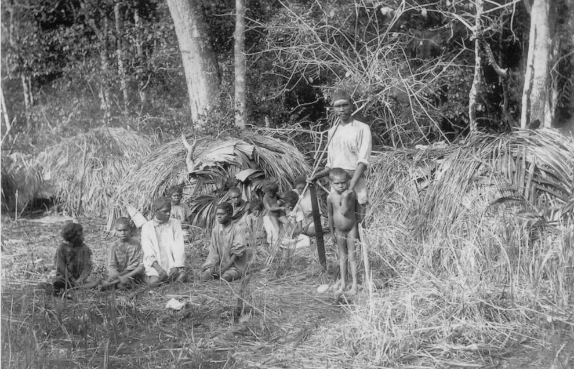
- Wet Tropics Management
- Legislative framework
- Management partnerships
- Sustainable Tourism Plan
- Threats to the Area
- Research and a Learning Landscape
- How can I help?
The Wet Tropic's landscape that we value so much today is the result of the stewardship of Rainforest Aboriginal Peoples who have been present since time immemorial.
There are many ‘story places’ across the Wet Tropics World Heritage Area that hold deep significance to Rainforest Aboriginal Peoples. Story places can include features such as mountains, rivers, waterfalls, swimming holes and trees.
For Rainforest Aboriginal Peoples these features were created during the ancestral creation period, or dreaming. They have powerful meaning and may be considered dangerous to approach or take resources from, except in prescribed ways or by the right person. These places must be respected, not damaged and must be managed carefully through the expert guidance of the appropriate Rainforest Aboriginal Peoples.
Some stories handed down over the generations relate to times of most recent volcanic activity, while archaeological evidence indicates occupation of the region for at least 40,000 years. Other stories describe a time when sea levels were much lower than today.
Over the ages, Rainforest Aboriginal Peoples followed seasonal cycles moving their camps with the seasons, gathering and hunting food, collecting and processing materials for medicines and utilising other materials for daily use. Rainforest Aboriginal Peoples developed unique processing techniques not seen anywhere else in Australia so that they could use particular poisonous plants as a food source.

In the wet season (December to April), people who lived in the northern areas of the Wet Tropics often moved up to the tablelands into drier country. They built large waterproof huts with frames made from tree saplings or lawyer cane and thatched them with palm leaves, grasses or bark. Some of their mijas (shelters) could house up to 30 people. In the more southern areas of the region, people would remain on the coastal floodplains during the wet season, but move to higher ground until the annual floods receded.
In the dry season (May to November), people used coastal resources and built temporary dwellings. Coastal groups made and used dugout canoes with a single outrigger to travel along the coast, islands and other reef areas for resources and ceremonies.
On land, they travelled along complex interconnecting networks of walking tracks. These tracks connected camps and neighbouring groups, and led to places of cultural significance, social and economic importance and areas rich with resources.
The walking tracks also defined the boundaries of each clan's traditional estates and there were certain protocols to follow when wanting to enter a neighbouring clan's estates. As such, Rainforest Aboriginal Peoples’ walking tracks are considered important cultural heritage.

With a deep respect for nature and an intimate knowledge of its cycles, Rainforest Aboriginal Peoples harvested food sources that were in season. Seasonal indicators told them when different plants were fruiting or when certain animals were 'fat' and ready to eat. The seasons also reflected when certain animals would be pregnant or birthing and this told Rainforest Aboriginal Peoples when not to eat specific animals or take particular plants.
Language, stories, songs and dances continue to be used to pass important survival knowledge to the younger generations. In this way, young people learn their place in the community, how to use rainforest plants for food, medicine and shelter, how to hunt animals or when to collect certain resources that were important for survival.
Rainforest Aboriginal Peoples are still deeply connected to the lands and waters of the Wet Tropics region. The identification, ongoing protection and presentation of cultural values are paramount. Tangible and intangible heritage, such as story places, totemic species, and artefacts, walking trails, stories, dances, language and spiritual beings are the core of Rainforest Aboriginal cultures. Their protection and preservation are integral to cultural survival.
Aboriginal cultural heritage of the Wet Tropics region belongs to Rainforest Aboriginal Peoples. It is important that culturally significant places are appropriately managed, protected, presented with the guidance and involvement of Rainforest Aboriginal Peoples.

Across the Wet Tropics World Heritage Area, Rainforest Aboriginal Peoples have undertaken cultural heritage collection and mapping using appropriate technologies such as GPS, digital cameras and software packages. This has involved interviewing elders, recording seasonal changes, and walking the land to maintain traditional knowledge and management practices.